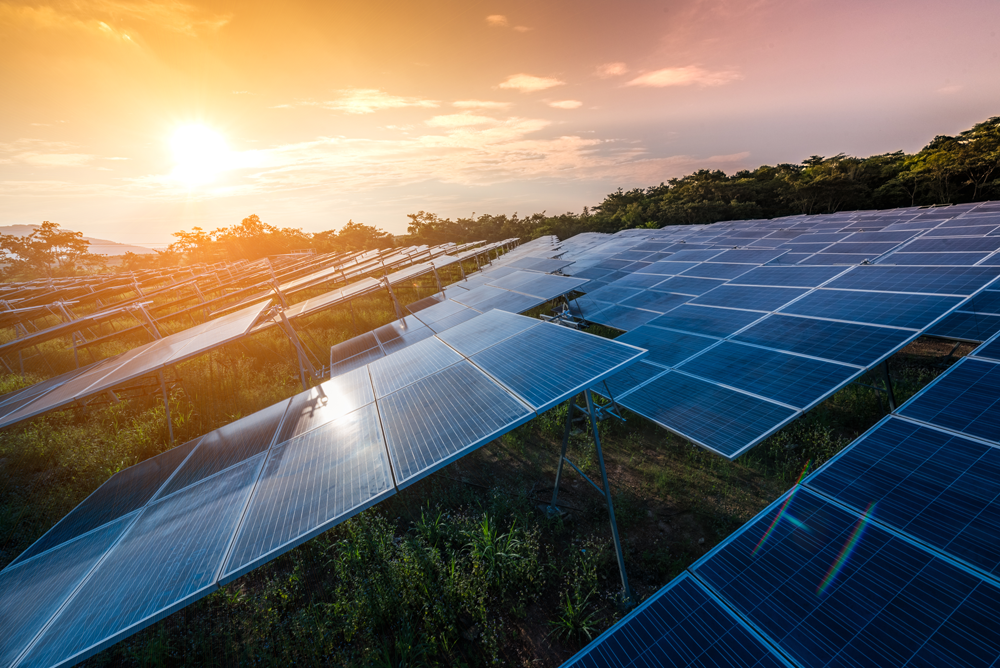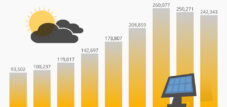Die Trump-Regierung wirft einen Schatten auf die US-Solarindustrie. Nach Jahren des Wachstums ist die Zahl der Arbeitsplätze im Solarbereich nun zum zweiten Mal in Folge gesunken. Das geht aus der National Solar Census hervor, die von der Solar Foundation Anfang letzter Woche veröffentlicht wurde. Im Jahr 2018 waren in den USA 242.343 Mitarbeiter im Bereich Solar beschäftigt, was einem Rückgang von 3,2 Prozent gegenüber dem Vorjahr entspricht. Auch die Branche schrumpfte 2017 um 3,8 Prozent.
Warum passiert das? Die Stiftung sagt, dass der zweijährige Rückgang auf die Unsicherheit über das Ergebnis des Section 201 Trade Case über Solarmodule und -zellen zurückzuführen ist. Das mache es für US-Solarprojektentwickler schwierig, Preise, Bit und Aufträge für zukünftige Projekte zu vergeben. Am 22. Januar 2018 hat die Trump-Administration auch Zölle auf kristalline Siliziummodule und -zellen zu 30 Prozent mit einer jährlichen Reduktion um 5 Prozentpunkte bis 2022 eingeführt. Dies führte zu höheren Kosten für Hardware und verzögerte das Beschäftigungswachstum.
Der derzeitige Rückgang ist besonders beunruhigend, da eine lange Liste von wissenschaftlichen Berichten sofortige Maßnahmen zur Reduzierung der CO2-Emissionen gefordert hat. Auch wenn die Dinge unter der Trump-Regierung turbulent sind, stehen für die US-Solarenergie hellere Tage bevor. Der Bericht behauptet, dass sich die Beschäftigungssituation aufgrund eines Rückstands bei Großprojekten und neuer politischer Anreize in wichtigen US-Bundesstaaten verbessern wird. Es wird erwartet, dass dies zu einem weiteren Anstieg der Beschäftigung führen wird, wobei die Gesamtprognose um 7 Prozent steigen und in diesem Jahr 259.400 erreichen wird.
The Trump administration is casting a shadow over the U.S. solar industry. After years of growth, the number of jobs in solar has now fallen for the second year running. That’s according to the National Solar Census which was released by the Solar Foundation earlier this week. 242,343 people were employed in solar across the U.S. in 2018 and that represents a 3.2 percent decline on the previous year. The industry also contracted 3.8 percent in 2017.
Why is that occurring? The Foundation says the two years of decline can be attributed to uncertainty surrounding the outcome of the Section 201 trade case on solar modules and cells. That made it difficult for U.S. solar project developers to price, bit and contract for future projects. On January 22, 2018, the Trump administration also imposed tariffs on crystalline silicon modules and cells at 30 percent with a 5 percentage point reduction per year through 2022. That brought about higher costs for hardware and stalled growth in employment.
The current contraction is especially worrying given that a long list of scientific reports has called for immediate action to reduce CO2 emissions. Even though things are turbulent under the Trump administration, brighter days do lie ahead for U.S. solar energy. The report claims that the job situation will improve due to a backlog of utility-scale projects and new policy incentives in key U.S. states. That is expected to bring about an increase in jobs once more with the total forecast to go up 7 percent and reach 259,400 this year.


